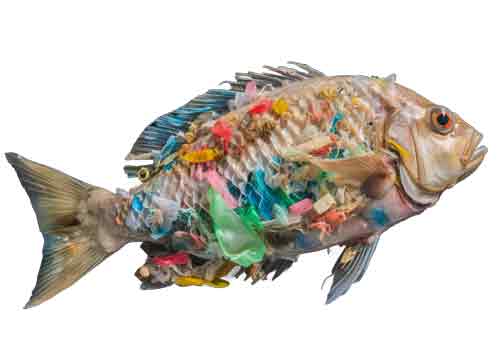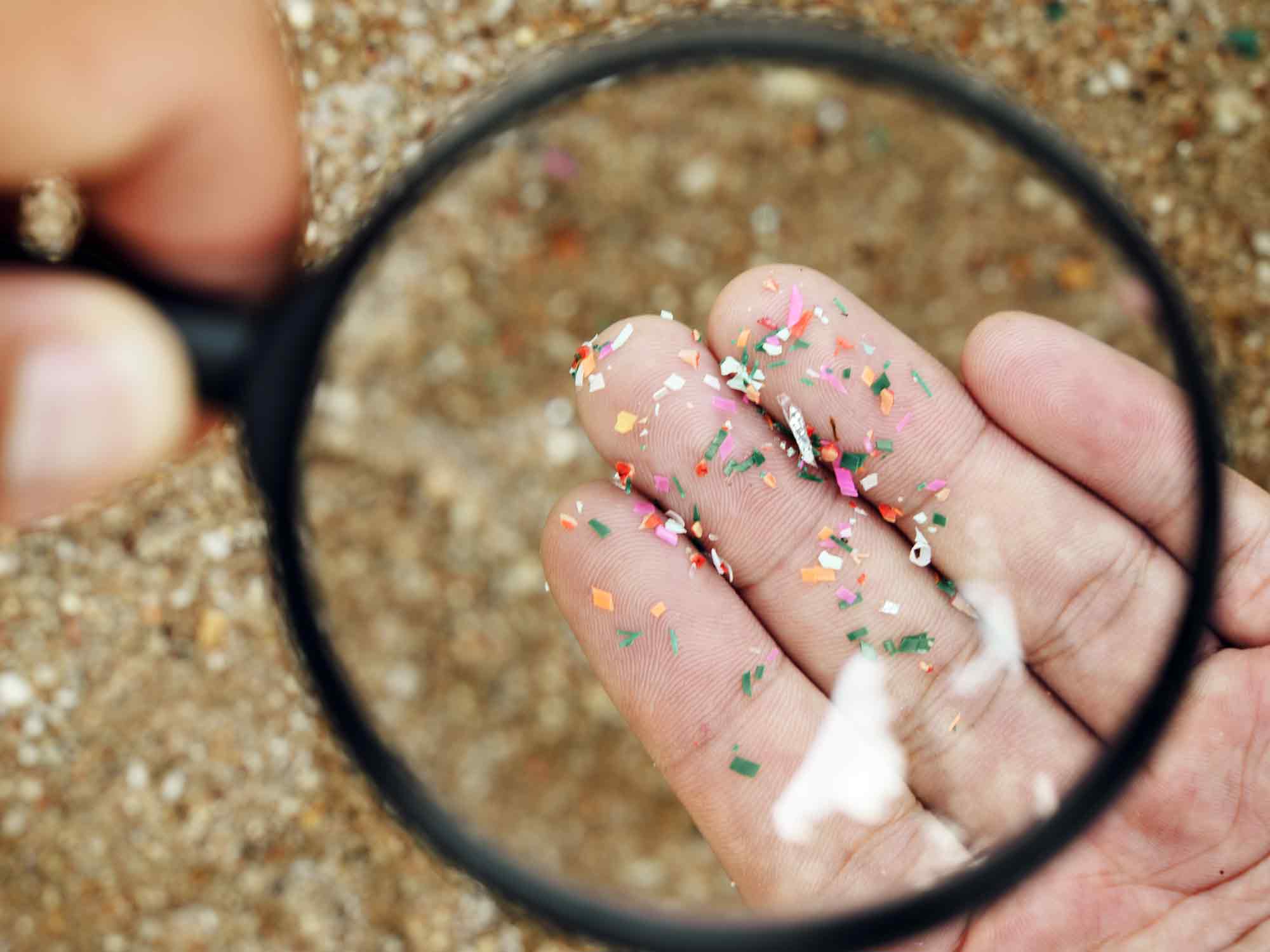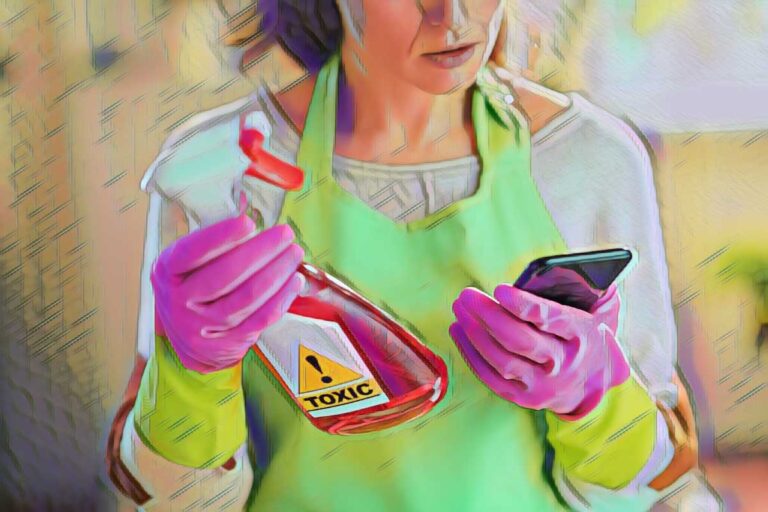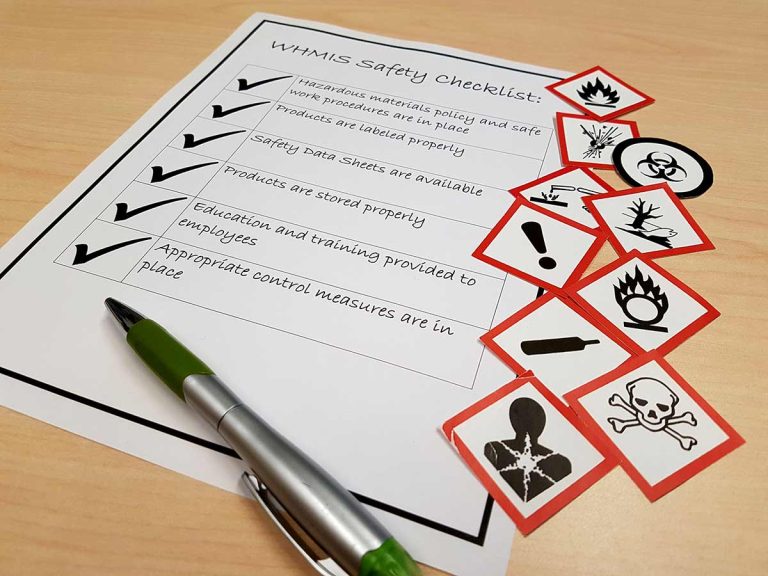Hidden Microplastics Are Haunting Your Health – How to Avoid
Why Are Plastics and Microplastics a Problem?
The world’s biggest threats may be microscopic in size. Terribly, only 9% of plastics are recycled. We often discard most plastics, but they return to haunt us in the form of hidden microplastics and hazardous chemicals in our food and water.
Why are Plastics Hazardous? – What Goes Around Comes Around
Plastics have undeniably become indispensable, yet excessive reliance on plastics undermines our well-being and jeopardizes the delicate balance of our ecosystems. The potential health consequences of plastic pollution are only beginning to be studied and understood. There are more than 13,000 different chemicals in plastics, and we only know the health effects of a small number of them. Some substances, such as phthalates and BPA, can leach from plastic into our food and water. A recent study shows that microplastics reduce the growth of terrestrial plants, marine algae, and freshwater algae. This will have a profound effect on our food supply. See below to learn more about the hazards of plastics and how to reduce your exposure.

What Are Microplastics?
As plastics degrade, they break down into smaller particles known as microplastics, measuring 5 mm or less in length—smaller than a sesame seed yet visible to the naked eye. Microplastics can further decompose into even tinier fragments called nanoplastics, which are less than one millionth of a meter in size and often undetectable with a standard microscope. These nanoplastics are so minuscule that they can infiltrate human tissue and even reach the brain.
Consider this: All the plastics produced since the 1950s are still haunting us. Next time you throw away a plastic bottle, bag, carton, or wrapper, you and your children will likely be eating or drinking part of it within a few years.

Are Microplastics a Health Hazard?
The human race’s biggest threats may be microscopic. Microplastics, nanoplastics, and PFAs, which are formed from the degradation of plastic, are now abundant in our environment. They are found in the air we breathe, the water we drink, chewing gum, and even the food we eat. Studies have even shown that some tea bags and plastic cutting boards release microplastics, and that chewing gum releases hundreds to thousands of microplastics for every gram of gum. In fact, researchers say that the average person may be ingesting 5g of plastics a week, which is similar to eating a credit card. Another study says, “We are also inhaling the equivalent of a credit card’s worth of plastic each week.”. All these plastics are accumulating, and the full impact on our health is not yet known.
Microplastics have been detected throughout the human body, including in the blood, saliva, liver, kidneys, placenta, bones, arteries, testicles and even the brain. Increased microplastics in the brain have been linked to cognitive impairment. Elevated microplastic concentrations have also been linked to heart and circulatory system issues. Workers in industries such as 3D printing, plastic production, and plastic injection moulding will be exposed to significantly higher levels than the general public. Ensure you are aware of the chemical hazards in your workplace by taking our free WHMIS training.
Studies suggest these tiny microplastic invaders can:
- Increase the risk of heart problems
- Increase the risk of thinking and memory problems
- Increase the risk of some types of cancer
- Disrupt the hormone system, leading to reproductive toxicity and nerve damage
- Disrupt our gut microbiome, potentially leading to inflammation and chronic diseases
- Lead to childhood developmental disorders, decreased sperm quality, and damage to the immune system
- Affects the development of Parkinson’s disease, Alzheimer’s disease and related dementia.
Check out the great video below for more information.
Where Are Plastics Used?
Plastics are made from fossil gas (often marketed as natural gas) or crude oil. Annually, over 400 million metric tons of plastic are produced, which is approximately equal to the total weight of every person on the planet. Approximately 40% of this plastic is used for single-use products, including shopping bags, cutlery, and take-out containers. Various additives are incorporated into plastics to achieve specific properties. Plastics can be manufactured with a wide range of qualities and can be shaped into almost any form. Their applications are incredibly diverse. Here are a few examples of where plastics are utilized:
- Food and drink packaging
- Fabrics
- Tires
- Toys
- Tools
- Automobiles and medical devices
- Tea bags
- Cutting boards
What Are the Different Types of Plastics?
A few examples of the types of plastic and some of the chemicals used in them are listed below.
- Polyethylene Terephthalate (PET) – water bottles and ketchup containers
- Polyvinyl Chloride – water pipes, blood bags
- Polystyrene – (i.e. styrofoam) foam egg cartons, beverage cups, packaging
- Polytetrafluoroethylene (PTFE) – (i.e. Teflon . “Teflon™ is a brand of PTFE) – nonstick pots and pans, Gore-Tex waterproof clothing
- Phthalates – are not a type of plastic but a group of chemicals used to make plastics more durable. They are often called plasticizers. Phthalates are found in hundreds of products, including vinyl flooring, lubricating oils, and personal-care products (such as soaps, shampoos, and hair sprays). Phthalates have been linked to heart disease in older people and enfants. In 2018, an estimated 356,238 deaths worldwide were attributed to a specific phthalate exposure, representing 13.497% of all cardiovascular deaths among individuals aged 55 to 64.
- Bisphenol A (BPA): BPA is a chemical found in polycarbonate plastics and epoxy resins. It is often used in food and beverage containers, clothing, water bottles, bottle tops, and water supply pipes. Some, but not all, plastics marked with recycling codes 3 or 7 may contain BPA.
- Forever Chemicals, or PFAS(per—and poly-fluoroalkyl substances), are a family of synthetic chemicals found in many plastics and are very resistant to breaking down. Even incinerators do not destroy them; they just become airborne. Contamination of drinking water with PFAS is a widespread problem in the United States and Canada. They are now found in all of us, stay in our bodies for long periods, and are linked to numerous health problems, including cancer.
We use plastics because they are rugged and robust, and do not break down in water or get eaten by insects or bacteria. However, their strength is also their liability. When we throw them out, they just come back to plague us. Plastic really doesn’t die, decay or disappear. All the plastic ever made still exists on the planet. Every person on Earth has been exposed to microplastics and PFAS (Per- and poly-fluoroalkyl substances). PFAs are incredibly hardy. When we throw them out, they leach from the landfill into the water we drink; when we burn them, they become airborne but then settle out with rain and snow.
Plastic can take hundreds or even thousands of years to decompose, meaning it remains in the environment for a long time. They break into tiny particles (microplastics—the width of a human hair—or even smaller – nanoplastics) and release toxic chemicals that pollute the soil, air, and water. You cannot go anywhere without finding plastic waste in the environment, even in Antarctica and at the bottom of the ocean.
Microplastics and nanoplastics can also absorb and act as transport media for harmful chemicals, heavy metals, and bacteria, further amplifying their risk.
Now, let’s examine how we can minimize our exposure to plastic and its degradation products.
How to Reduce Your Exposure to Microplastics, Phthalates, Bisphenol A (BPA) and PFAs
Microplastics and Nanoplastics:
- Reduce single-use plastics: Opt for reusable water bottles, shopping bags, and food containers
- Use a water filter: Look for an independently certified water filtration device.
- Avoid chewing gum
- Limit seafood consumption: Choose smaller fish species that are lower on the food chain to minimize microplastic accumulation.
- Wash fruits and vegetables thoroughly: This can remove surface-bound microplastics.
- Dust and vacuum regularly: Regular vacuuming is an effective way to reduce the amount of dust in the air.
- Choose natural fibres: Opt for clothing made from cotton or hemp instead of synthetic materials that shed microplastic fibres.
- Avoid drinking water from plastic bottles: A recent study has found significant amounts of nanoplastics in bottled water.
- Use a wooden cutting board: Cutting on plastic cutting boards will add microplastics to your food.
Phthalates, Bisphenol A and PFAs:
For more information on the chemicals in your food, visit PlasticList. They found that less-processed foods contain fewer chemicals than highly processed ones; water in glass and plastic water bottles has surprisingly similar chemical content; and hot foods that spend 45 minutes in takeout containers have 34% higher levels of plastic chemicals than the same dishes tested directly from the restaurant. Ways to reduce your exposure include:
- Use cast iron, carbon steel, stainless steel or ceramic nonstick frying pans and pots
- Don’t heat food or drinks in plastic containers, especially those labelled with recycling codes 3, 6, or 7. Microwaving or using boiling water can cause chemicals to leach into your food.
- Store food in metal or glass containers: Chemicals can transfer from the plastic into your food. Opt for glass, stainless steel, or ceramic food and beverage containers.
- Minimize processed food consumption: Processed foods often contain phthalates and BPA, which are used in packaging materials.
- Use phthalate-free and BPA-free products: Look for labels like “phthalate-free” or “paraben-free.”
- Avoid stain-resistant carpet upholstery as well as stain-resistant treatments and waterproofing sprays that are not PFAS-free.
Summary
Plastics, which are made from fossil fuels, have become an integral part of modern life. However, they pose significant environmental and health risks due to their durability. Over 13,000 different chemicals are found in plastics, including harmful substances such as phthalates, BPA, and PFAS; the full extent of their effects is only partially understood. These chemicals can leach into food and water, leading to health concerns such as cancer, heart problems, and cognitive issues. Plastics can persist for hundreds of years, breaking down into microplastics and nanoplastics that spread environmental toxins and pose additional health risks.
To reduce exposure to these harmful substances, it is advisable to limit the use of single-use plastics, use water filters, choose natural fibres, avoid heating food in plastic containers, and select phthalate-free and BPA-free products, among other precautions.
Learn more about “The 9 Most Toxic Products You Use Every Day” by following this link!
Hopefully, this page has provided helpful information for identifying and controlling the pervasive microplastics in our air, water, and food. Please refer to the provided links above for more detailed information.
This website does not contain medical advice. The contents of this website, such as text, graphics, images and other material, are intended for informational and educational purposes only and not to render medical advice. The contents of this website are not intended to substitute for professional medical advice, diagnosis or treatment.










I have learned many things about the chemical, we use how it is the poison can be released into the food and water substance.thank you so much for the information.
Thank you for the information.
I have learnt a lot about how chemical poison can be released into food substances
I most certainly find your training program well organized, research and insightful. I will recommend it to anyone looking for something better enlightening. Good job, keep it up!
thank for information.